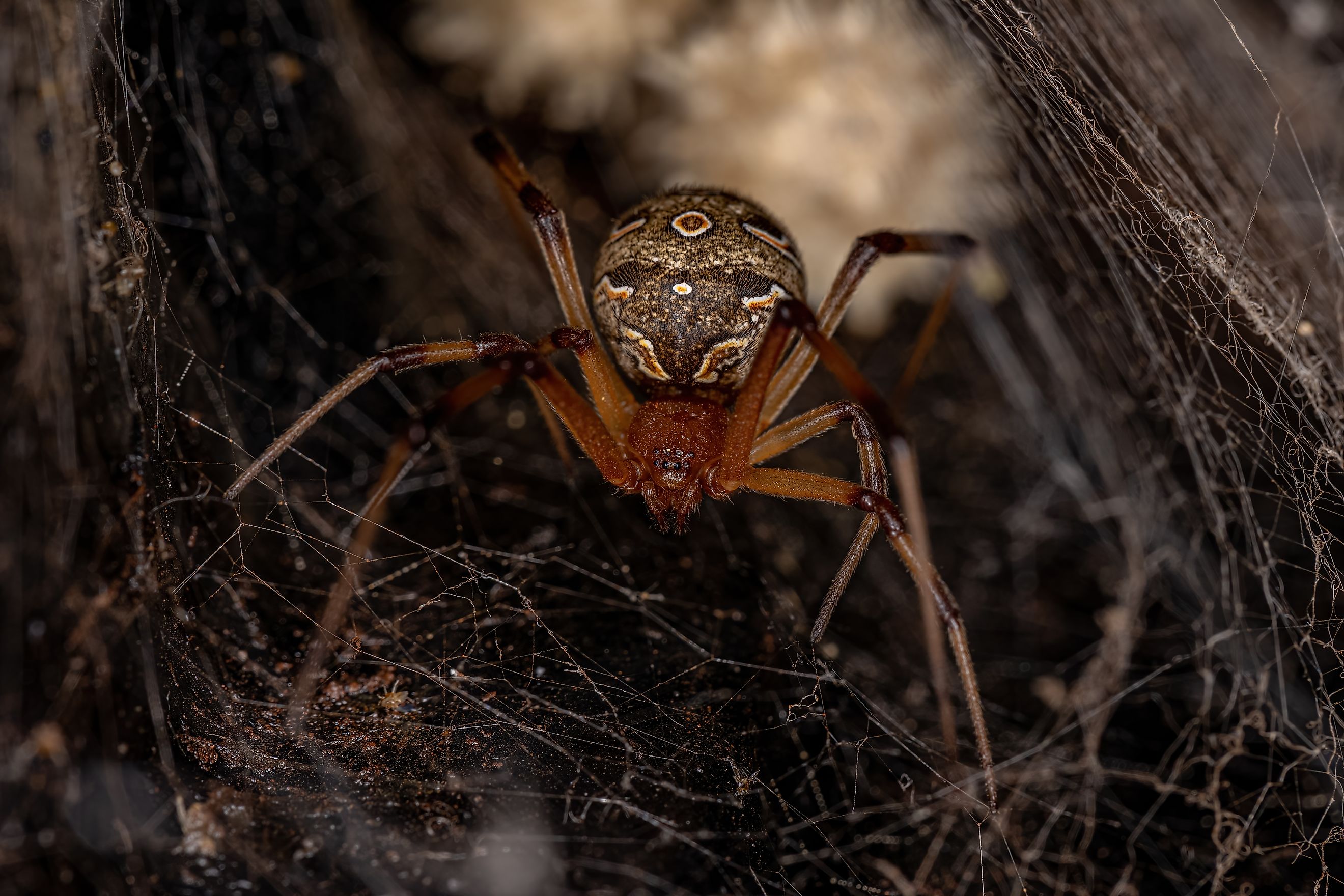
5 Most Venomous Spiders in Florida
Spiders thrive in Florida's warm, humid weather, which is why spiders are prevalent in the Sunshine State, no matter what season. In the Northern United States and Canada, spiders tend to disappear in the colder weather as their primary food source, insects, also disappear. Arachnids tend to stick around all year round in Florida, which rarely experiences temperatures below 50 degrees.
Florida has an abundance of spiders, but there are only five types of venomous spiders that residents or travelers to the state should be wary of: the brown recluse and four variations of widow spiders, whose females are notorious for killing their mates. Can they kill a human? Surprisingly, the short answer is yes, but deaths from a widow spider bite are rare. Nevertheless, a widow’s venom can severely injure humans, and a medical professional should treat any suspected spider bite by a widow or a recluse.
Brown Recluse
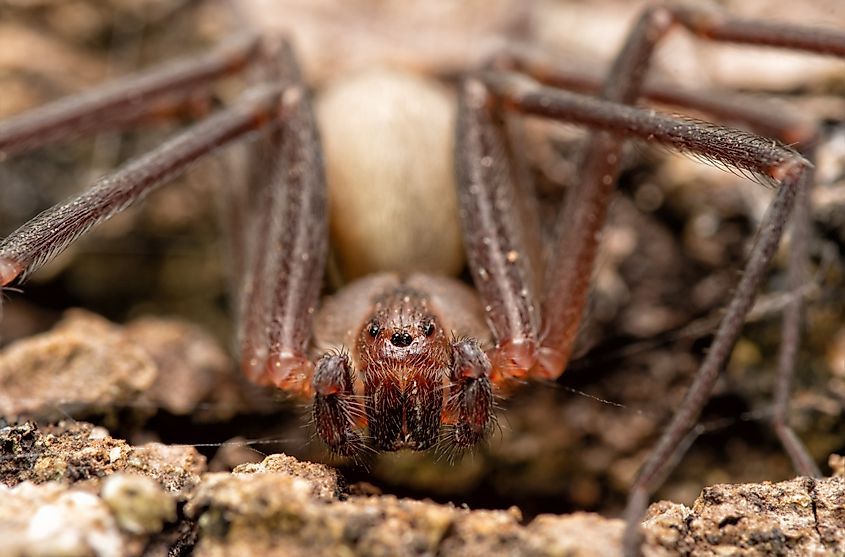
Brown recluse (Loxosceles reclusa) spiders are easily recognizable by the violin-shaped, dark brown mark on their upper body, but their lower body can be dark brown, tan, yellow, or green. They are typically between 1 to 1.5 inches long. The venom of a brown recluse spider is poisonous and can lead to tissue necrosis at the bite site. While not all bites result in severe reactions, symptoms can include painful ulcers, fevers, and chills and should be treated with medical attention to prevent tissue damage or infection.
Recluse spiders are not native to Florida, but occasionally, they have established populations in buildings. If a traveler comes across a recluse spider, chances are there are more nearby. They are known to live in dark corners, under furniture, in storage boxes, and in general areas of disuse. They sometimes hide in piles of clothing or blankets that are left unused for a prolonged period.
Southern Black Widow
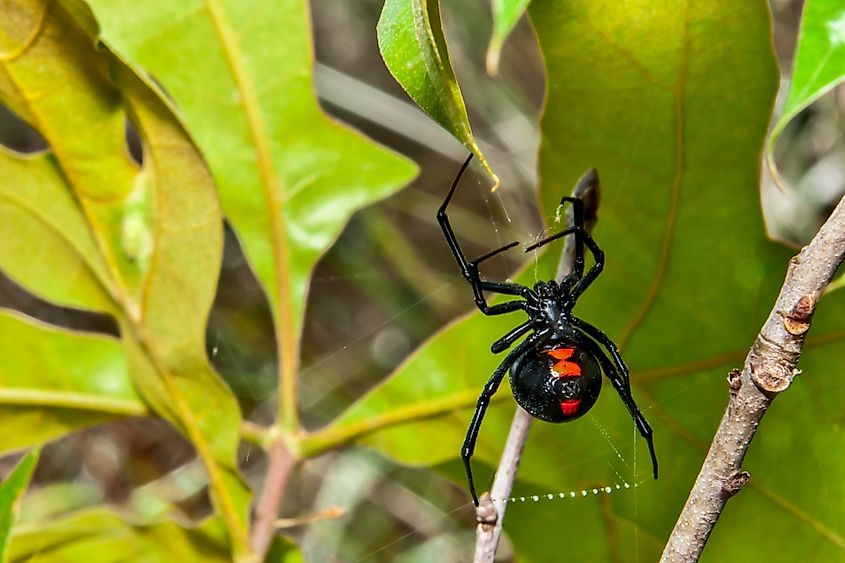
Of all the widow spiders in the state, the southern black widow (Latrodectus mactans) is the most dangerous to humans. They are easily identified by the solid red hourglass on the underside of the abdomen of their jet-black body. They are slightly larger than the northern black widow—ranging from about 1.5 to 2 inches long. Latrodectus mactans is dangerous due to its potent neurotoxin, and its bites are systemic, which spread through a traveler’s lymphatic system. Within one to three hours after a bite, symptoms include severe pain, muscle cramping, sweating, nausea, and vomiting.
Southern black widow spiders are shy and non-aggressive, and bites rarely occur unless the spider is taunted or accidentally disturbed, crushed, or trapped against human skin when putting on a shoe, clothing, or a glove where a spider might be hiding.
Northern Black Widow
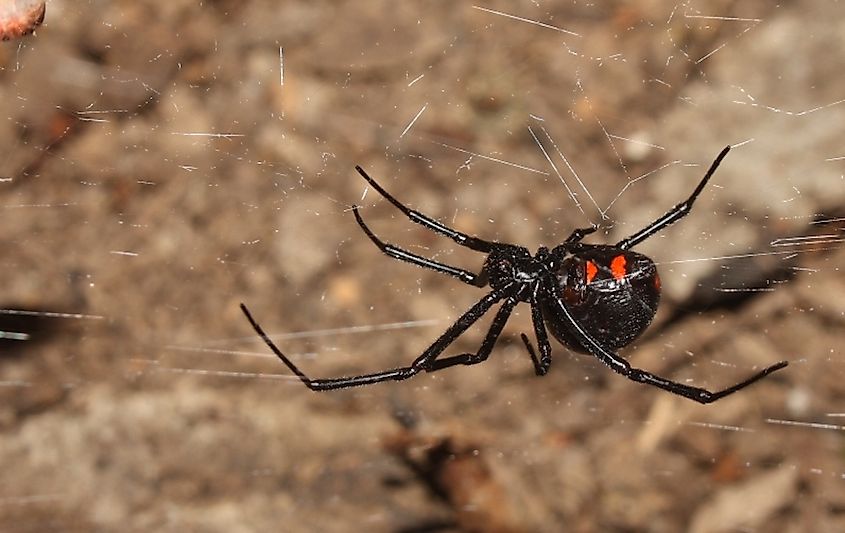
Unlike the southern black widow, in the northern black widow (Lactrodectus variolus), the distinctive hourglass marking on the underside of the abdomen is incomplete in the middle. Instead, they have a series of red spots along the middle of the abdomen and lateral white stripes on the abdomen. The toxin released from the bite of the northern black widow affects the central nervous system, and pain can be felt almost immediately after the bite and increases for one to three hours but may last as long as 24 hours.
In severe cases, muscles become rigid with spasms, body temperature rises, and blood pressure increases, but the bite's severity depends on the victim's age, location of the bite, depth of the bite, and when the spider last used her venom.
Red Widow
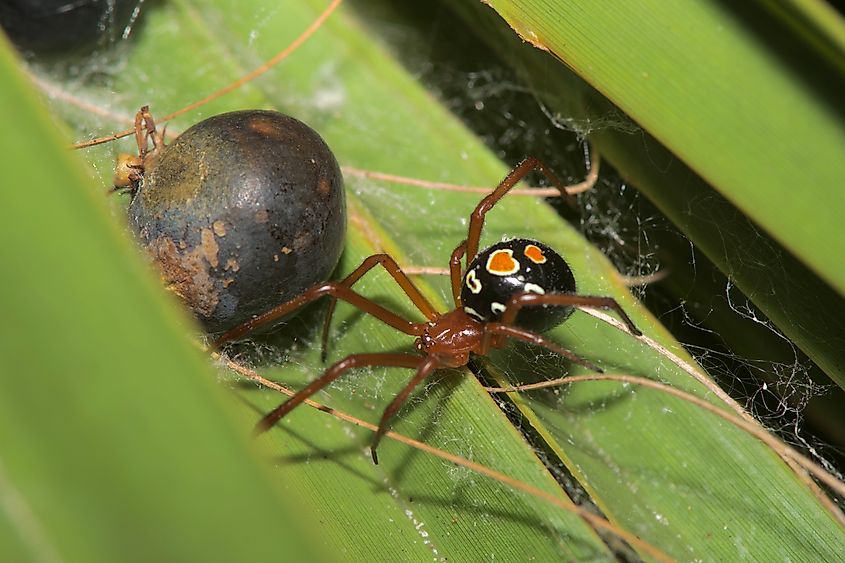
The red widow (Lactrodectus bishopi) is endemic to central and southern Florida, where it lives primarily in dunes surrounded by sand pine—a type of vegetation only found in Florida and Alabama. They are smaller than their northern and southern cousins; the female is one-half an inch long with a leg span of one-half to two inches. The red widow has a red-orange thorax with a black abdomen with yellow rings around red spots but does not have the familiar hourglass marking on its abdomen. Its long legs are vermillion red. The bite of a red widow is similar to that of a black widow and should be treated just as seriously, but there are no reported deaths associated with a red widow bite.
The red widow makes its web in palmetto bushes about 11 inches from the ground. Their webs are messy, with a funnel-shaped retreat where the spider stores its egg sacs.
Brown Widow
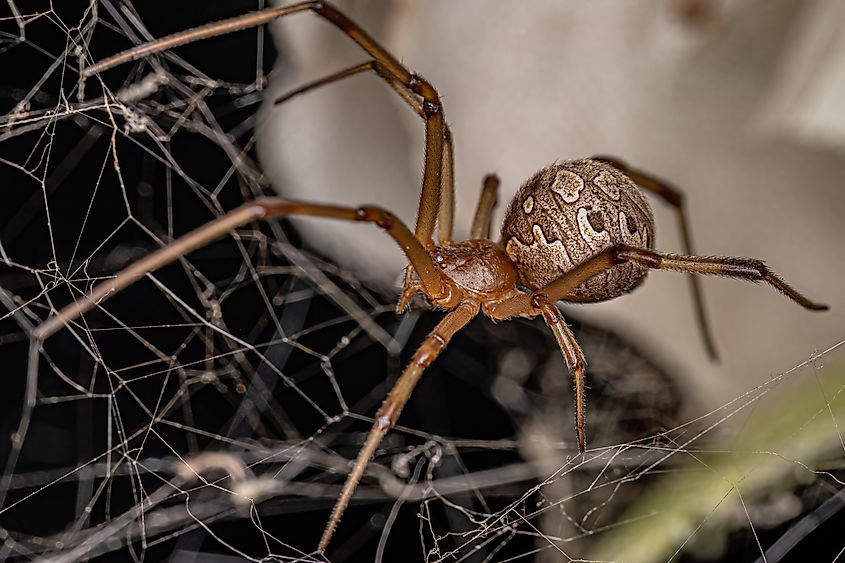
The brown widow spider (Lactrodectus geometricus) has a very different look than the others. Like the red widow, the brown widow is only about one-half inch in size. They are all brown with a black and white geometric pattern on the sides of their abdomen and orange-yellow hourglasses on their abdomen. They also have stripes on their legs. Though painful, the bite of a brown widow is not as dangerous as that of a northern black widow because the size of the spider prevents it from delivering the same amount of venom as a black widow. Travelers to Florida, or residents, should wash the bite area with soap and water and keep a close eye on the wound, but medical attention is not usually required.
Lactrodectus geometricus is not native to the United States and is considered invasive. It was spotted in southern Florida in the mid-1990s and spread westward and northward. Brown widows have also been spotted in south California and Hawaii.
Florida's warm, humid climate allows spiders to thrive year-round, unlike colder regions where spiders disappear in winter. While many spider species live in the state, only five venomous types pose risks: the brown recluse and four widow species. The brown recluse, identifiable by a violin-shaped mark, can cause tissue damage with its venom. The southern black widow, the most dangerous, has a potent neurotoxin causing severe pain and muscle cramps. Northern black and red widows are also dangerous; they differ in markings but can have serious effects. The brown widow, an invasive species, has milder venom. All bites should be treated with caution.











